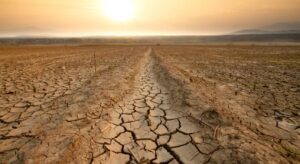 The article “Thirst Waves: The Hidden Climate Threat Drying Out American Farms” from Earth.com discusses a growing climate-related phenomenon affecting agriculture in the United States. As global temperatures rise, the atmosphere’s capacity to extract moisture from the land increases, leading to events termed “thirst waves.” These are periods of exceptionally high evaporative demand, where the atmosphere pulls moisture from soil and plants over consecutive days, stressing crops even in the absence of drought conditions.
The article “Thirst Waves: The Hidden Climate Threat Drying Out American Farms” from Earth.com discusses a growing climate-related phenomenon affecting agriculture in the United States. As global temperatures rise, the atmosphere’s capacity to extract moisture from the land increases, leading to events termed “thirst waves.” These are periods of exceptionally high evaporative demand, where the atmosphere pulls moisture from soil and plants over consecutive days, stressing crops even in the absence of drought conditions.
Researchers M.S. Kukal and M. Hobbins have identified that thirst waves are becoming more frequent, intense, and longer-lasting across the U.S., particularly impacting regions like the High Plains, Prairie Gateway, and Mississippi Portal. From 1981 to 2021, the average thirst wave lasted about four days and occurred nearly three times per growing season, with some areas experiencing up to 20 events in a single season. These events are not confined to traditionally arid regions, indicating a shifting pattern that poses new challenges for farmers unaccustomed to such conditions.
The increasing prevalence of thirst waves highlights the need for revised agricultural planning and water management strategies to mitigate their impact on crop yields and food security.
Source: Earth.Com
